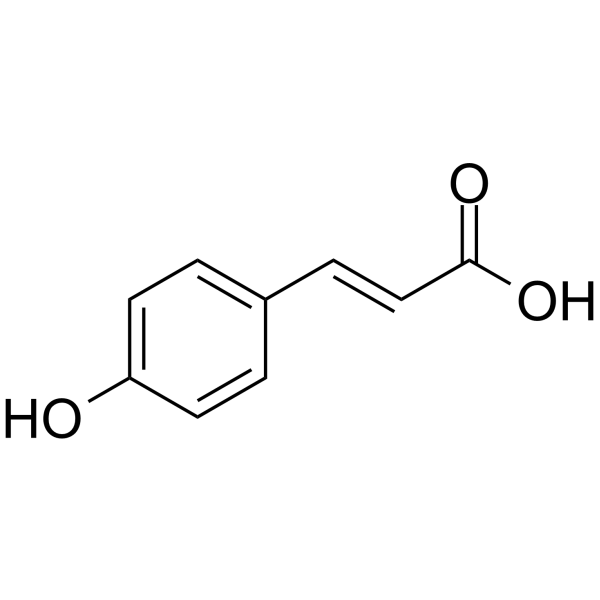Home
Products
p-Hydroxy-cinnamic acid



| Product Name | p-Hydroxy-cinnamic acid |
| Price: | Inquiry |
| Catalog No.: | CN06984 |
| CAS No.: | 7400-08-0 |
| Molecular Formula: | C9H8O3 |
| Molecular Weight: | 164.16 g/mol |
| Purity: | >=98% |
| Type of Compound: | Phenylpropanoids |
| Physical Desc.: | Powder |
| Source: | The barks of Cinnamomum cassia Presl |
| Solvent: | Chloroform, Dichloromethane, Ethyl Acetate, DMSO, Acetone, etc. |
| SMILES: | OC(=O)C=Cc1ccc(cc1)O |
| Contact us | |
|---|---|
| First Name: | |
| Last Name: | |
| E-mail: | |
| Question: | |
| Description | p-Hydroxycinnamic acid, a common dietary phenol, could inhibit platelet activity, with IC50s of 371 μM, 126 μM for thromboxane B2 production and lipopolysaccharide-induced prostaglandin E2 generation, respectively. |
| Target | PGE2:126 μM (IC50) TXB2:371 μM (IC50) Human Endogenous Metabolite |
| In Vitro | p-Hydroxycinnamic acid (p-Coumaric acid), is a ubiquitous plant metabolite with antioxidant and anti-inflammatory properties. p-Hydroxycinnamic acid (500 μM and 1 mM) reduces ADP-induced platelet aggregation (55•2 (SE 4•01) % and 35•6 (SE 2•35) % relative to basal level, respectively). p-Hydroxycinnamic acid is able to modify platelet function, a shear-inducing device that simulates primary haemostasis. p-Hydroxycinnamic acid interferes also with arachidonic acid cascade, reducing thromboxane B2 production and lipopolysaccharide-induced prostaglandin E2 generation (IC50 371 and 126 μM, respectively)[1]. |
| Density | 1.3±0.1 g/cm3 |
| Boiling Point | 346.1±17.0 °C at 760 mmHg |
| Flash Point | 177.3±17.4 °C |
| Exact Mass | 164.047348 |
| PSA | 57.53000 |
| LogP | 1.88 |
| Vapour Pressure | 0.0±0.8 mmHg at 25°C |
| Storage condition | -20°C |